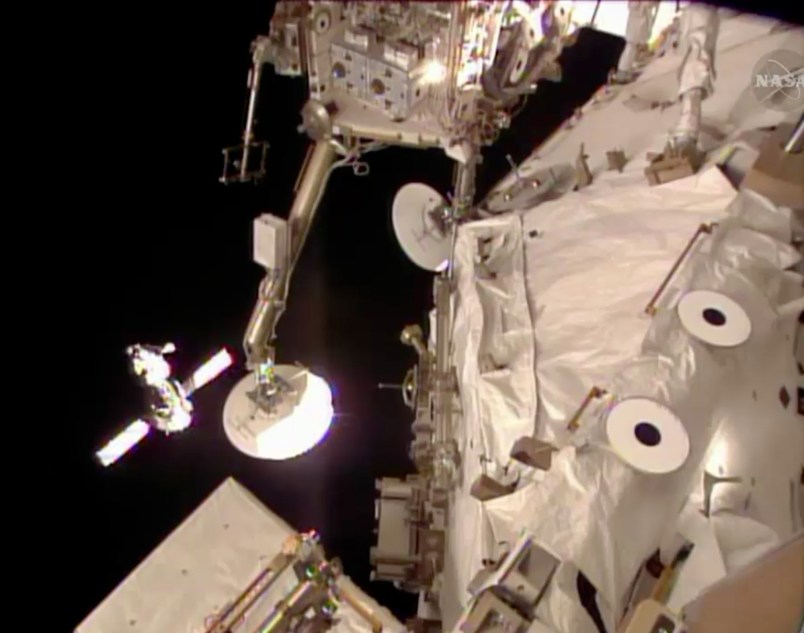LOS ANGELES (AP) — Arriving fashionably late, a Russian spacecraft carrying three astronauts docked with the International Space Station Thursday evening 250 miles over Brazil.
The crew aboard the orbiting outpost congratulated the latest members — Russians Alexander Skvortsov and Oleg Artemyev and NASA’s Steve Swanson.
“A flawless approach, a flawless docking,” said mission control commentator Rob Navias.
The trio blasted off from Kazakhstan on Wednesday local time aboard a Soyuz rocket for what was supposed to be a six-hour straight shot to the space station. But an engine burn designed to fine-tune the craft’s path did not occur as planned, delaying the docking.
Two rendezvous maneuvers were executed to put the Soyuz on course. The astronauts were never in danger.
Jaunts to the space station used to take two days. Last year, engineers experimented with a way to cut the trip down to six hours by compressing the number of times the Soyuz fires its engines to raise its orbit to meet the space station.
Had the latest trip been on schedule, it would have been only the fifth time that a crew would have taken the “fast track” route.
Engineers were investigating the snag, but believe the burn didn’t occur because the Soyuz was not in the right position.

Expedition 39 Soyuz Commander Aleksander Skvortsov, facing, second from right, of the Russian Federal Space Agency, is welcomed aboard the International Space Station by fellow Russian cosmonaut Mikhail Tyurin, right, Thursday, March 27, 2014, after the Soyuz docked. At left, Japanese astronaut Koichi Wakata welcomes Russian cosmonaut Oleg Artemyev, background, through the hatch of the space station. (AP Photo/NASA)
The new crew, who will stay in orbit for six months, joined Japan’s Koichi Wakata, NASA’s Rick Mastracchio and Russia’s Mikhail Tyurin.
Since the retirement of the space shuttle fleet, NASA has depended on the Russians to hitch a ride to the space station, paying nearly $71 million per seat.
Despite the frosty relationship on Earth between the U.S. and Russia over the annexation of Crimea, politics has not affected the cooperation in space.
NASA has been working to develop its own space taxi to the orbiting laboratory through contracts with two private companies including California-based SpaceX founded by billionaire Elon Musk.
SpaceX’s fourth supply run set for Sunday was postponed because of a problem at the Florida launch site. It was the second delay this month. The company earlier said it needed more time.
SpaceX’s unmanned capsule named Dragon will haul 2 tons of supplies and experiments. It will also deliver a pair of legs for the humanoid robot at the space station. Until now, the torso-only Robonaut has been stuck on a pedestal.
Lead photo: In this frame grab from video provided by NASA, the Russian Soyuz spacecraft, left, ferrying three crew members, approaches the International Space Station, Thursday, March 27, 2014. (AP Photo/NASA)
___
Follow Alicia Chang at http://twitter.com/SciWriAlicia
Copyright 2014 The Associated Press. All rights reserved. This material may not be published, broadcast, rewritten or redistributed.









